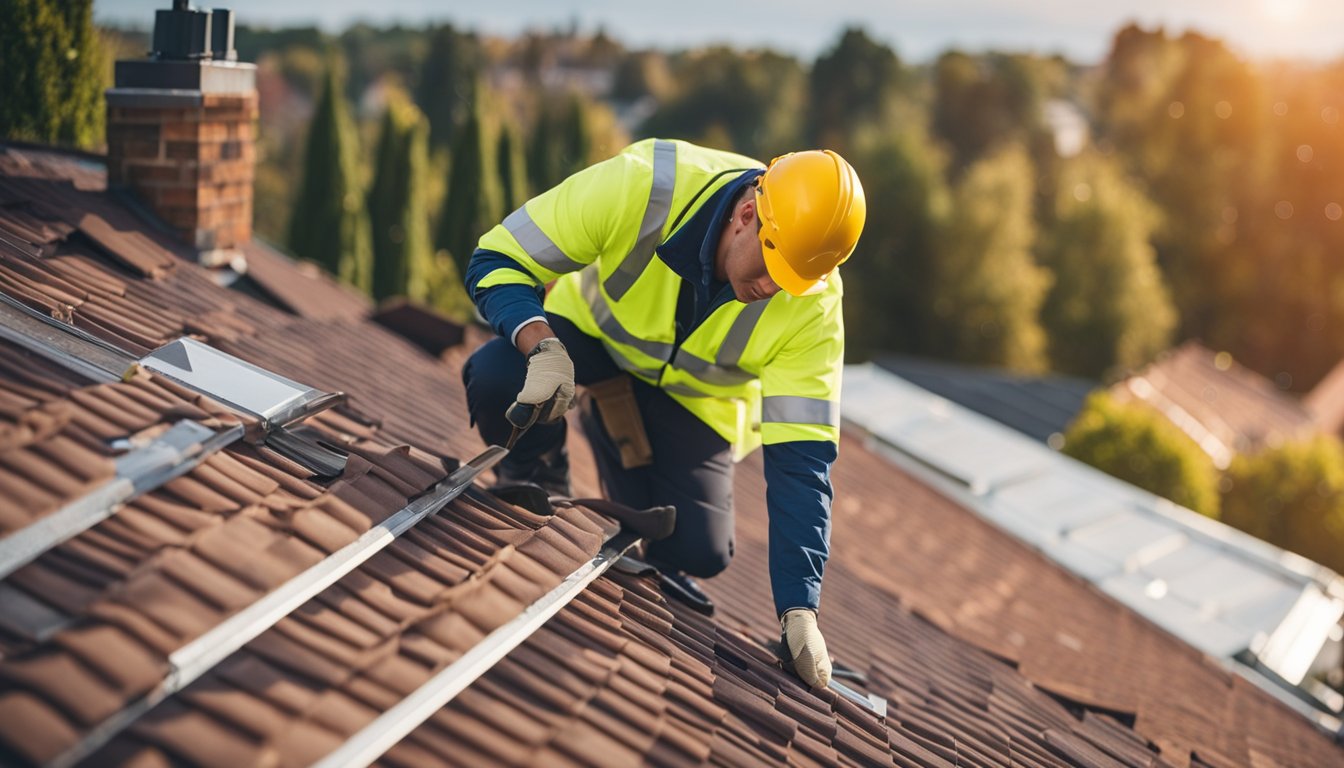Late updated: 27 Jun 2024 14:06
Written by: Oliver Bennett
Navigating UK Roof Regulations And Codes: Essential Compliance Guide
Navigating UK roof regulations and codes can be a daunting task for homeowners and contractors alike. These regulations are designed to ensure the safety, durability, and performance of roofing structures in the UK. As we explore these standards, it's important to understand how they impact your project and your compliance responsibilities.

Building regulations in the UK encompass a range of specific requirements, including structural design, load-bearing capacities, and roof pitch standards. These guidelines cover everything from wind loads to snow loads, ensuring that roofs are constructed to withstand the UK's diverse weather conditions. Familiarising ourselves with these details is crucial for both compliance and the long-term health of your roof.
The importance of adhering to these codes cannot be overstated. From materials to methods, each aspect of roofing must meet set standards to guarantee safety and efficiency. As we delve deeper into UK roofing regulations, we'll uncover key insights and practical tips that will help ensure your roofing projects are both compliant and high-performing.
Key Takeaways
- UK roofing regulations cover structural design and load-bearing capacities.
- Compliance with these regulations ensures safety and performance.
- Familiarising with both materials and methods is essential for adherence.
Understanding UK Roofing Regulations and Standards
Navigating the UK's roofing regulations and standards is essential for ensuring compliance, safety, and performance. Key areas to focus on include legislative frameworks, safety considerations in design, and standards for materials and performance.
Essential Legislation and Building Codes
UK roofing regulations are underpinned by several pieces of legislation and building codes. British Standards (BS), such as BS 5534, outline the requirements for slating and tiling, providing guidelines for durability and installation. Part L of the Building Regulations focuses on energy efficiency, setting standards for thermal insulation and reducing heat loss. The International Residential Code (IRC) and International Energy Conservation Code (IECC) are also referenced, ensuring a comprehensive framework of standards.
In addition to these, planning permission can often be necessary for significant roofing alterations, particularly in conservation areas. It's important we check local authority requirements to avoid non-compliance.
Compliance and Safety in Design
Ensuring safety and compliance starts in the design phase. Fire safety is a crucial consideration, requiring materials that meet specific fire resistance standards. This includes ensuring that roofing materials and structures are capable of preventing the spread of fire to adjacent buildings. Proper ventilation is also essential to prevent moisture buildup, which can lead to structural damage and health complications. We must also consider snow loads and wind resistance to ensure the roof can withstand local weather conditions.
Work safety standards mandate secure access and fall protection measures during installation and maintenance. This includes the use of personal protective equipment (PPE) and safe working practices to prevent accidents on site.
Materials and Performance Standards
The choice of materials impacts the roof's performance, durability, and compliance with UK standards. Materials must meet BS 5534 requirements for durability and installation. This standard specifies the performance criteria for slating and tiling, ensuring that materials can withstand the UK's varying climate conditions. Thermal performance standards are outlined in Part L, specifying the required insulation levels to improve energy efficiency.
Roofing materials need to meet fire safety standards to ensure they are resistant to ignition and can prevent the spread of fire. The emphasis is also on sustainable materials and construction practices, aligning with modern environmental considerations. By adhering to these standards, we not only ensure compliance but also enhance the efficiency and longevity of roofing systems.
Implementation and Compliance Procedures

Navigating the complexities of UK roof regulations and codes demands attention to detail and a strong grasp of the legal framework. It's essential to ensure that all involved parties, from builders to homeowners, understand their roles and responsibilities.
Planning Permission and Legal Obligations
Before starting any roofing project, it's crucial to secure planning permission when applicable. While some repairs and minor alterations fall under Permitted Development Rights, extensions or major roof conversions usually require approval from local planning authorities. Legal obligations include adhering to the latest building codes and regulations to ensure structural integrity and safety. Homeowners and contractors must be aware of the relevant jurisdictions and legal checks to avoid penalties and potential legal issues.
Best Practices for Builders and Contractors
Builders and contractors must follow best practices to ensure compliance with roofing standards. This includes thorough planning, using approved materials, and employing skilled professionals knowledgeable in current code revisions and roofing systems. Proper documentation and adherence to safety protocols are vital. By maintaining transparent communication, we can help mitigate risks and deliver high-quality services. It ensures projects meet standards while guaranteeing structural design integrity and client satisfaction.
Inspection, Certification, and Insurance
Regular inspections are necessary to certify that roofing projects comply with established standards. Local authorities or certified inspectors conduct these checks, issuing certification upon successful completion. Holding proper insurance is essential for both builders and homeowners to cover liabilities. It protects against unforeseen damages or accidents. Insurance also reinforces a commitment to quality and safety, ensuring peace of mind for all parties involved in the roofing process.
Frequently Asked Questions

Navigating the intricate web of UK roof regulations requires a clear grasp of legal requirements, permissible roof pitch, planning permissions, and specific building standards. Below, we address some of the most common queries regarding these critical aspects.
What are the legal requirements for roof construction in the UK?
In the UK, roof construction must adhere to several building regulations to ensure structural integrity and safety. Regulations focus on elements like material quality, architectural integrity, and adherence to codes such as BS 5534 for timber roofing battens. Compliance with these standards is essential to avoid penalties and ensure the structural soundness of a roof.
What is the minimum roof pitch allowed by UK building regulations?
The UK's building regulations set specific minimum roof pitch requirements to ensure effective rainwater drainage and structural durability. Generally, the minimum pitch for a roof is around 15 degrees, though this can vary depending on roofing material and local authority guidelines. Ensuring the proper pitch is crucial for preventing water pooling and subsequent damage.
Is planning permission required for roof alterations in the United Kingdom?
Planning permission is typically required for substantial roof alterations, such as changes that affect the roof’s height, pitch, or structural form. Minor modifications that do not significantly impact the building’s exterior might not need permission. It's essential to consult local planning authorities to determine if specific changes necessitate approval.
Under what circumstances is it mandatory to adhere to building regulations for roofing?
Building regulations must be followed when constructing a new roof or making significant alterations to an existing one. This includes changes that affect structural elements, insulation, or fire safety. Even smaller repairs may require adherence to building codes if they significantly alter the original roofing materials or methods.
What are the standards for fire safety regarding roofing materials in the UK?
Fire safety standards for roofing materials in the UK include regulations that ensure materials used are fire-resistant and installed in a manner that impedes the spread of flames. Materials must comply with standards such as BS 476, which stipulate fire-testing procedures. Implementing fire-resistant materials is critical for enhancing the safety of a building’s occupants.
How does one ensure compliance with the UK's thermal insulation standards for roofs?
To comply with thermal insulation standards, roofing must include adequate insulation that meets or exceeds the U-value requirements specified in building regulations. Using materials with high thermal efficiency and ensuring proper installation can significantly improve energy conservation. Conducting regular inspections and updates helps maintain compliance with evolving standards.
